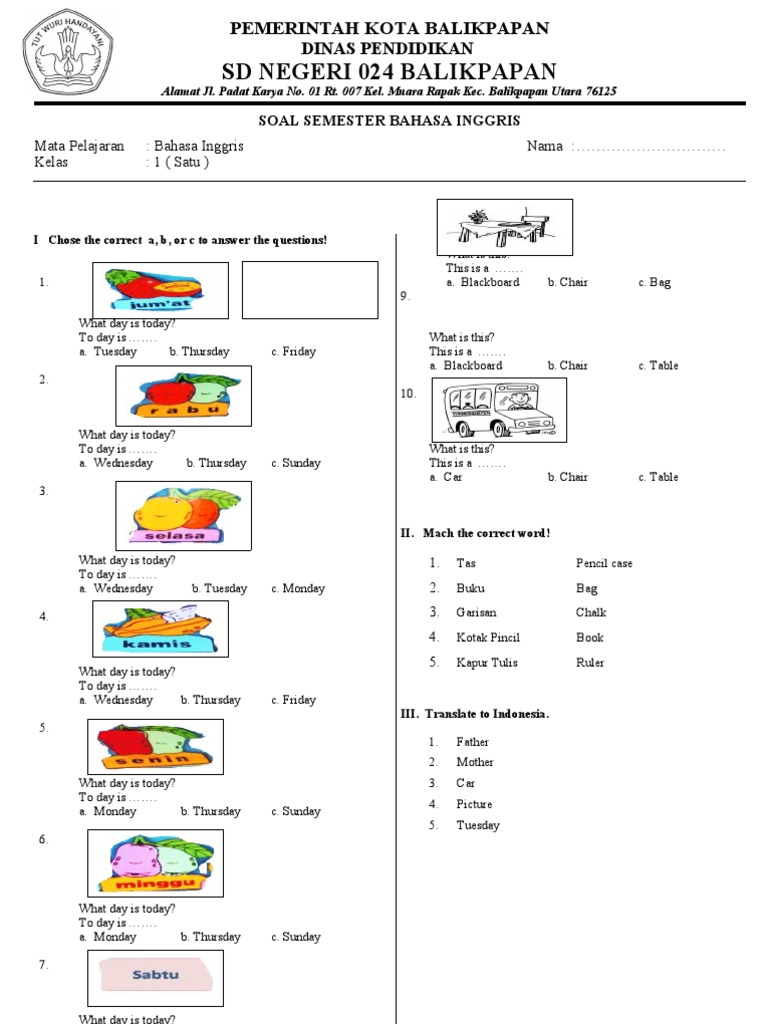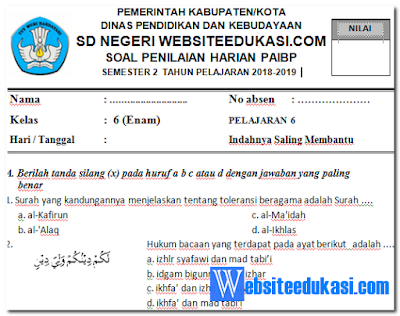Book Appointment Now

I. Introduction
A. Importance of English for young learners
B. Overview of English language learning in Grade 2, Semester 1
C. Curriculum 2013 framework
II. Vocabulary Development
A. Basic vocabulary related to daily life (greetings, introductions, family, numbers, colors, shapes, animals, foods)
B. Example questions and activities
C. Strategies for teaching vocabulary
III. Sentence Construction
A. Simple sentence structures (Subject-Verb-Object)
B. Using action verbs and descriptive words
C. Example questions and activities
D. Strategies for teaching sentence construction
IV. Reading Comprehension
A. Simple stories and texts with pictures
B. Identifying main ideas and details
C. Answering comprehension questions (who, what, where, when, why)
D. Example questions and activities
E. Strategies for developing reading comprehension skills
V. Listening Comprehension
A. Following simple instructions
B. Identifying sounds and words
C. Understanding simple stories read aloud
D. Example questions and activities
E. Strategies for improving listening comprehension
VI. Speaking Skills
A. Simple greetings and introductions
B. Asking and answering simple questions
C. Describing objects and pictures
D. Example questions and activities
E. Strategies for enhancing speaking fluency and accuracy
VII. Writing Skills
A. Copying simple words and sentences
B. Writing simple sentences based on pictures or prompts
C. Writing short stories or descriptions
D. Example questions and activities
E. Strategies for improving writing skills
VIII. Assessment and Evaluation
A. Formative and summative assessment methods
B. Types of assessment questions (multiple choice, matching, fill-in-the-blanks, short answer)
C. Importance of providing feedback
IX. Conclusion
A. Recap of key concepts and skills
B. Importance of continuous learning and practice
C. Resources for further learning
I. Introduction
Learning English at a young age is crucial for developing a strong foundation in the language. For Grade 2 students in Semester 1, under the 2013 Curriculum, the focus is on building fundamental skills in vocabulary, sentence construction, reading, listening, speaking, and writing. This foundation allows them to progress smoothly to more advanced levels in subsequent years. The 2013 curriculum emphasizes a communicative approach, encouraging active participation and real-world application of the learned language.
II. Vocabulary Development
Second graders are introduced to basic vocabulary relevant to their daily lives. This includes greetings (hello, goodbye, good morning), introductions (My name is…), family members (mother, father, brother, sister), numbers (1-100), colors (red, blue, green, yellow), shapes (circle, square, triangle), animals (cat, dog, bird), and foods (apple, banana, rice).
Example Questions and Activities:
- Match the picture to the word.
- Circle the correct word.
- Label the pictures.
- Use flashcards with pictures and words.
- Play vocabulary games (e.g., Bingo, Memory).
Strategies for Teaching Vocabulary:
- Use visual aids (pictures, flashcards).
- Relate vocabulary to real-life contexts.
- Use repetition and reinforcement.
- Encourage students to use the vocabulary in sentences.
III. Sentence Construction
Students learn to construct simple sentences using the Subject-Verb-Object (SVO) structure. They are introduced to action verbs (run, jump, eat) and descriptive words (big, small, red).
Example Questions and Activities:
- Complete the sentence: The cat __ (eats) fish.
- Write a sentence about the picture.
- Arrange the words to make a sentence.
- Use sentence building blocks.
Strategies for Teaching Sentence Construction:
- Use visual aids to illustrate sentence structure.
- Provide sentence frames for students to complete.
- Encourage students to practice writing sentences.
- Correct errors gently and provide positive feedback.
IV. Reading Comprehension
Reading comprehension is developed through simple stories and texts with accompanying pictures. Students learn to identify the main idea and supporting details. They answer comprehension questions using question words like who, what, where, when, and why.
Example Questions and Activities:
- Who is the main character?
- What happened in the story?
- Where did the story take place?
- When did the story happen?
- Why did the character do that?
- Read aloud simple stories.
- Ask students to retell the story in their own words.
Strategies for Developing Reading Comprehension Skills:
- Use picture books and graphic novels.
- Read aloud to students regularly.
- Ask comprehension questions before, during, and after reading.
- Encourage students to predict what will happen next.
V. Listening Comprehension
Listening comprehension is enhanced through activities that require students to follow simple instructions, identify sounds and words, and understand simple stories read aloud.
Example Questions and Activities:
- Follow the instructions: "Clap your hands."
- Identify the sound: "Is it a bird or a car?"
- Listen to the story and answer the questions.
- Listen to songs with simple vocabulary.
Strategies for Improving Listening Comprehension:
- Use clear and concise instructions.
- Speak slowly and clearly.
- Use visual aids to support listening.
- Provide opportunities for students to respond to what they hear.
VI. Speaking Skills
Students practice speaking English through greetings, introductions, asking and answering simple questions, and describing objects and pictures.
Example Questions and Activities:
- Greet your friend.
- Introduce yourself to the class.
- Ask your friend, "What is your favorite color?"
- Describe the picture using simple sentences.
- Role-play simple conversations.
Strategies for Enhancing Speaking Fluency and Accuracy:
- Create a supportive and encouraging classroom environment.
- Provide opportunities for students to speak regularly.
- Correct errors gently and provide positive feedback.
- Use games and activities to make speaking fun.
VII. Writing Skills
Writing skills are developed through copying simple words and sentences, writing simple sentences based on pictures or prompts, and writing short stories or descriptions.
Example Questions and Activities:
- Copy the words: cat, dog, bird.
- Write a sentence about your pet.
- Write a short story about your day.
- Write a description of your favorite toy.
Strategies for Improving Writing Skills:
- Provide writing models.
- Use picture prompts.
- Encourage students to write regularly.
- Provide feedback on their writing.
VIII. Assessment and Evaluation
Assessment is crucial to monitor student progress and identify areas needing improvement. Formative assessment involves ongoing monitoring through observation, questioning, and informal tasks. Summative assessment uses more formal methods like tests and projects at the end of a unit or semester.
Types of Assessment Questions:
- Multiple choice
- Matching
- Fill-in-the-blanks
- Short answer
- Drawing pictures
Importance of Providing Feedback:
Constructive feedback is vital for student learning. Feedback should be specific, positive, and focused on improvement.
IX. Conclusion
Mastering fundamental English skills in Grade 2 is paramount. Continuous practice, engaging activities, and positive reinforcement create a solid foundation for future English language learning. Utilizing various resources, including textbooks, workbooks, online games, and interactive activities, enhances the learning process, making it enjoyable and effective. The emphasis on communication ensures students develop confidence and proficiency in using English effectively.



